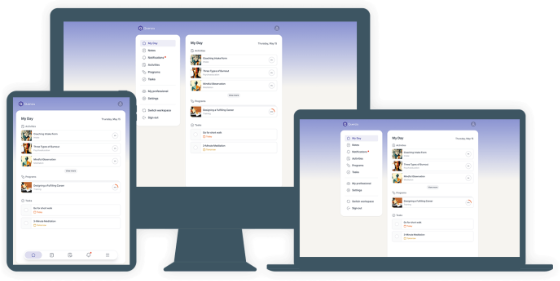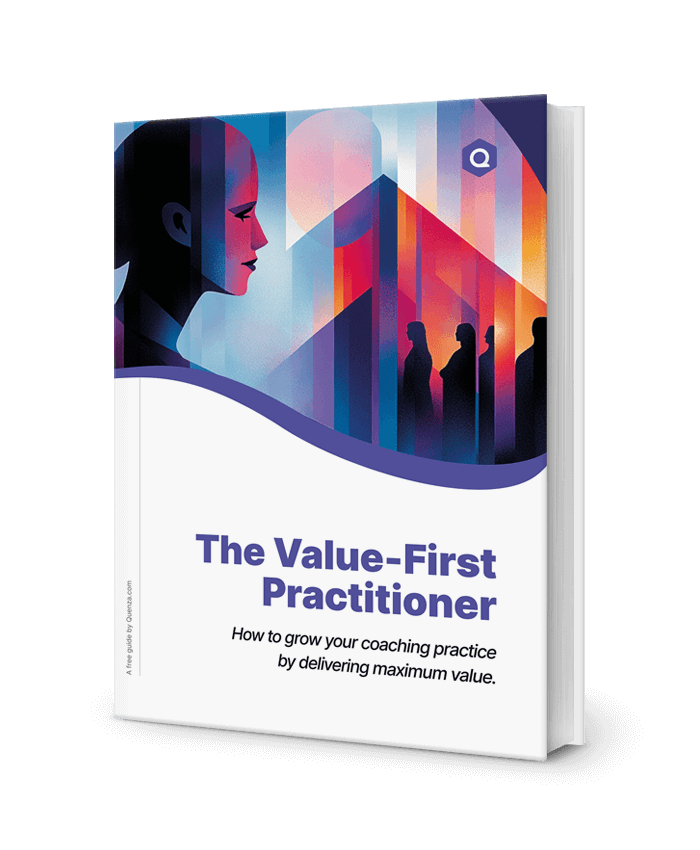Public speaking is a skill that can make or break careers, yet it remains a significant source of anxiety for many. Whether you’re presenting to a boardroom or addressing a large audience, the ability to communicate effectively is crucial. Enter Neuro-Linguistic Programming (NLP), a powerful approach that can transform your public speaking abilities [1].
NLP, developed in the 1970s, explores the relationship between our thoughts, language, and behavior. By understanding and applying NLP techniques, speakers can enhance their delivery, build rapport with their audience, and overcome common obstacles like nervousness and self-doubt. This blog post will delve into how NLP can revolutionize your public speaking skills, providing you with practical techniques to captivate your audience and deliver your message with confidence and impact.
Understanding NLP in Public Speaking
Neuro-Linguistic Programming is a model of interpersonal communication that focuses on the connection between neurological processes, language, and behavioral patterns. In the context of public speaking, NLP offers a framework for understanding how speakers can effectively communicate and influence their audience [2].
NLP techniques can significantly enhance public speaking skills by:
- Improving non-verbal communication
- Enhancing language patterns for greater impact
- Building rapport with the audience
- Managing speaker’s state and confidence
Research has shown that incorporating NLP techniques can lead to improved communication skills and increased confidence in public speaking scenarios [3].
By understanding and applying NLP principles, speakers can learn to tailor their message to resonate with their audience on a deeper level, creating more impactful and memorable presentations.
| Technique | Purpose | Application |
|---|---|---|
| Matching and Mirroring | Build Rapport | Subtly match audience’s body language and tone |
| Anchoring | Boost Confidence | Create a physical trigger for positive emotions |
| Visualization | Enhance Performance | Mentally rehearse successful speech delivery |
| Reframing | Manage Anxiety | Change perspective on challenging situations |
Building Rapport with Your Audience
Establishing a strong connection with your audience is crucial for effective public speaking. NLP offers powerful techniques for building rapport, which can significantly enhance the impact of your presentation.
One key NLP technique for building rapport is matching and mirroring. This involves subtly mimicking the body language, tone of voice, and speech patterns of your audience [4]. By aligning your communication style with that of your audience, you create a sense of familiarity and trust.
To establish trust and connection:
- Use inclusive language to create a sense of unity
- Share personal anecdotes to humanize yourself
- Maintain eye contact to show engagement
- Use open body language to appear approachable
Research has shown that speakers who effectively build rapport are perceived as more credible and persuasive [5].
By focusing on building rapport, you create an environment where your audience is more receptive to your message, leading to a more engaging and effective presentation.
Harnessing the Power of Language Patterns
Language is a powerful tool in public speaking, and NLP provides techniques to harness its full potential. By using specific language patterns, speakers can enhance their ability to engage, persuade, and influence their audience.
One key NLP technique is the use of hypnotic language patterns. These patterns involve using words and phrases that bypass the conscious mind and speak directly to the subconscious, creating a deeper level of engagement [6]. Examples include:
- Embedded commands: Subtly inserting suggestions within your speech
- Presuppositions: Making assumptions that guide the listener’s thinking
- Metaphors: Using analogies to explain complex ideas
Another powerful NLP technique is the use of sensory-rich language. By incorporating words that appeal to different senses (visual, auditory, kinesthetic), speakers can create a more immersive and memorable experience for their audience [7].
By mastering these language patterns, speakers can significantly enhance their ability to communicate effectively, persuade their audience, and leave a lasting impact with their words.
| Pattern | Description | Example |
|---|---|---|
| Embedded Commands | Subtle suggestions within speech | “As you listen, you may find yourself agreeing” |
| Presuppositions | Assumptions that guide thinking | “Before you fully understand this concept…” |
| Metaphors | Analogies to explain complex ideas | “Public speaking is like steering a ship” |
| Sensory-Rich Language | Words appealing to different senses | “Feel the energy, see the impact, hear the applause” |
Anchoring Techniques for Confidence
Confidence is crucial for effective public speaking, and NLP offers powerful anchoring techniques to boost self-assurance. Anchoring involves creating a physical or mental trigger that elicits a specific emotional state, such as confidence [8].
To create a positive anchor:
- Identify a past experience where you felt extremely confident
- Vividly recall that experience, engaging all your senses
- At the peak of the emotion, create a physical trigger (e.g., touching your thumb and forefinger)
- Practice activating this anchor regularly
For overcoming nervousness and anxiety, NLP offers techniques like the “Circle of Excellence.” This involves imagining stepping into a circle of confidence and competence before speaking [9].
By consistently practicing these anchoring techniques, speakers can effectively manage their emotional state and project confidence during their presentations.
Visualization Techniques for Success
Visualization is a powerful NLP tool that can significantly enhance public speaking performance. By mentally rehearsing a successful speech, speakers can improve their confidence and delivery [10].
Key visualization techniques include:
- Mental rehearsal: Vividly imagine delivering your speech successfully
- Outcome visualization: Picture the positive results of your presentation
- Resource state access: Recall past successes to boost confidence
Research has shown that visualization can improve performance by enhancing motivation, increasing self-efficacy, and reducing anxiety [11].
By incorporating these visualization techniques into your preparation routine, you can significantly enhance your public speaking performance and achieve greater success on stage.
Managing State and Energy
Effective public speaking requires not only skillful delivery but also optimal management of one’s mental and physical state. NLP provides techniques for regulating emotional states and harnessing energy for dynamic delivery [12].
Techniques for managing state include:
- Reframing: Changing perspective on challenging situations
- Pattern interruption: Breaking negative thought patterns
- Anchoring: Using physical triggers to access resourceful states
For harnessing energy, consider:
- Power poses: Adopting confident body postures
- Controlled breathing: Using breath to regulate energy levels
- Progressive muscle relaxation: Releasing tension for better focus
Research has shown that these techniques can significantly improve public speaking performance by reducing anxiety and enhancing confidence [13].
Practical NLP Exercises for Public Speakers
To truly master NLP techniques for public speaking, consistent practice is key. Here are some practical exercises to incorporate into your preparation routine:
- Rapport-building exercise: Practice matching and mirroring with a partner
- Anchoring practice: Create and test positive anchors in various situations
- Visualization routine: Spend 10 minutes daily visualizing successful speeches
- Language pattern drills: Practice using hypnotic language in everyday conversations
Research has shown that deliberate practice of these techniques can lead to significant improvements in public speaking performance [14].
By consistently engaging in these exercises, you can internalize NLP techniques and naturally incorporate them into your public speaking, leading to more impactful and confident presentations.
Overcoming Common Public Speaking Challenges with NLP
Even seasoned speakers face challenges when addressing an audience. NLP offers effective strategies to overcome these common hurdles, ensuring a more confident and impactful delivery [15].
One prevalent challenge is managing stage fright. NLP’s ‘swish pattern’ technique can be particularly effective here. This involves visualizing your anxious self, then rapidly replacing that image with one of you speaking confidently. By repeating this process, you can rewire your brain’s response to public speaking situations [16].
Another common issue is maintaining audience engagement. NLP’s ‘pacing and leading’ technique can be invaluable here. Start by ‘pacing’ your audience – matching their energy level and speaking style. Once you’ve established rapport, gradually ‘lead’ them towards your desired emotional state or perspective. This subtle shift can keep your audience engaged and receptive to your message.
Handling difficult questions or opposition from the audience can also be challenging. NLP’s reframing technique offers a powerful approach. Instead of becoming defensive, reframe the challenging question or comment in a way that aligns with your message. This not only diffuses potential conflict but also demonstrates your ability to handle pressure gracefully.
Lastly, maintaining focus and energy throughout a long presentation can be daunting. NLP’s ‘anchoring’ technique, discussed earlier, can be adapted to create multiple anchors for different states – one for energy, one for calmness, one for confidence. By triggering these anchors at appropriate moments during your speech, you can maintain optimal performance throughout.
| Challenge | NLP Technique | Application |
|---|---|---|
| Stage Fright | Swish Pattern | Replace anxious self-image with confident one |
| Audience Engagement | Pacing and Leading | Match audience energy, then guide to desired state |
| Handling Opposition | Reframing | Reframe challenges to align with your message |
| Maintaining Focus | Multiple Anchoring | Create anchors for energy, calmness, and confidence |
By incorporating these NLP techniques into your public speaking toolkit, you can effectively overcome common challenges and deliver your message with greater impact and confidence [17].
Measuring and Improving Your NLP-Enhanced Public Speaking Skills
As you integrate NLP techniques into your public speaking practice, it’s crucial to measure your progress and continuously refine your skills. This process of ongoing evaluation and improvement is key to mastering the art of NLP-enhanced public speaking [18].
One effective way to measure your progress is through video analysis. Record your speeches and analyze them using NLP criteria. Pay attention to your use of language patterns, your ability to build and maintain rapport, and your overall state management. This visual feedback can provide valuable insights into areas for improvement.
Another useful tool is audience feedback. Develop a short questionnaire based on NLP principles to gauge your audience’s response. Ask about their level of engagement, how well they understood and remembered your key points, and whether they felt a connection with you as a speaker. This feedback can help you refine your NLP techniques for maximum impact.
Self-assessment is also crucial. After each speaking engagement, take time to reflect on your performance. How well did you manage your state? Were you able to effectively use anchors and other NLP techniques? Did you successfully pace and lead your audience? Regular self-reflection can help you identify patterns and areas for growth.
To further improve your skills, consider working with an NLP-trained speaking coach. They can provide personalized feedback and help you refine your techniques. Many coaches use advanced NLP methods like ‘modeling,’ where you learn by observing and replicating the unconscious behaviors of highly effective speakers [19].
Finally, remember that improvement is an ongoing process. Set specific, measurable goals for your speaking skills and regularly review your progress. This might include mastering a new NLP technique each month, gradually increasing the size of your audiences, or tackling more challenging speaking scenarios.
By consistently measuring and refining your NLP-enhanced public speaking skills, you can continue to grow as a speaker, delivering increasingly impactful and influential presentations [20].
Conclusion
Mastering public speaking is a journey, and NLP provides a powerful set of tools to enhance your skills along the way. From building rapport and using persuasive language patterns to managing your state and visualizing success, NLP techniques offer a comprehensive approach to transforming your public speaking abilities.
Remember, the key to success lies in consistent practice and application of these techniques. As you incorporate NLP into your public speaking preparation and delivery, you’ll likely notice increased confidence, better audience engagement, and more impactful presentations.
By embracing these NLP techniques, you’re not just improving your public speaking skills – you’re transforming your ability to connect, influence, and inspire others through the power of your words and presence.
Frequently Asked Questions
The timeframe for seeing results can vary depending on individual factors such as prior experience, dedication to practice, and the specific techniques being applied. However, many people report noticeable improvements in their confidence and delivery within 4-6 weeks of consistent practice. It’s important to remember that mastering NLP techniques for public speaking is an ongoing process, and continuous refinement can lead to even greater improvements over time.
Yes, NLP techniques can be highly effective for impromptu speaking situations. Techniques such as anchoring for confidence and reframing can be quickly applied to manage your state in unexpected speaking scenarios. Additionally, practicing NLP language patterns regularly can help you develop a natural flow in your speech, making it easier to articulate your thoughts clearly even without extensive preparation.
While traditional public speaking methods often focus on external factors like voice projection and body language, NLP takes a more holistic approach by addressing the internal processes that influence our communication. NLP techniques aim to align your thoughts, emotions, and behaviors to create a more authentic and impactful speaking style. This internal-external alignment often results in more natural and persuasive presentations compared to focusing solely on outward techniques.
As with any powerful communication tool, it’s important to use NLP techniques ethically and responsibly. Some critics argue that certain NLP techniques, particularly those involving persuasion, could be used manipulatively. It’s crucial to maintain integrity and use these techniques to enhance genuine communication rather than to mislead or unduly influence others. Additionally, while NLP can be highly effective, it should not be seen as a substitute for thorough knowledge of your subject matter and authentic engagement with your audience.
NLP techniques can often complement and enhance other public speaking methodologies. For example, you can use NLP visualization techniques to improve your mental rehearsal of speeches structured using traditional methods. Similarly, NLP rapport-building techniques can be integrated with standard advice on audience engagement. The key is to experiment with different combinations and find what works best for you. Many speakers find that NLP provides a valuable additional layer to their existing public speaking skills, rather than replacing them entirely.
References
- ^ Tosey, P., & Mathison, J. (2010). Exploring inner landscapes through psychophenomenology: The contribution of neuro-linguistic programming to qualitative research methodology. Qualitative Research in Organizations and Management: An International Journal, 5(1), 63-82. https://doi.org/10.1108/17465641011042026
- ^ Witkowski, T. (2010). Thirty-five years of research on Neuro-Linguistic Programming. NLP research data base. State of the art or pseudoscientific decoration? Polish Psychological Bulletin, 41(2), 58-66. https://doi.org/10.2478/v10059-010-0008-0
- ^ Linder-Pelz, S., & Hall, L. M. (2007). The theoretical roots of NLP-based coaching. The Coaching Psychologist, 3(1), 12-17.
- ^ Wood, J. A. (2006). NLP revisited: Nonverbal communications and signals of trustworthiness. Journal of Personal Selling & Sales Management, 26(2), 197-204. https://doi.org/10.2753/PSS0885-3134260206
- ^ Dillard, J. P., & Pfau, M. (2002). The persuasion handbook: Developments in theory and practice. Sage Publications.
- ^ Heap, M. (2008). The validity of some early claims of neuro-linguistic programming. Skeptical Intelligencer, 11, 6-13.
- ^ Cassidy-Rice, J. (2014). NLP promotes personal development and professional success: Process gives the edge to today's successful communicators. Human Resource Management International Digest, 22(3), 38-41. https://doi.org/10.1108/HRMID-05-2014-0070
- ^ Kotera, Y., & Sheffield, D. (2017). Disney strategy for Japanese university students' career guidance: A mixed methods pilot study. Journal of the National Institute for Career Education and Counselling, 38(1), 52-61. https://doi.org/10.20856/jnicec.3808
- ^ Lazarus, J. (2010). Successful NLP: For the results you want. Crimson Publishing.
- ^ Cuddy, A. J., Wilmuth, C. A., & Carney, D. R. (2012). The benefit of power posing before a high-stakes social evaluation. Harvard Business School Working Paper, No. 13-027. https://www.hbs.edu/faculty/Publication%20Files/13-027_e3eebac5-8c36-4a44-9150-e254960edb2e.pdf
- ^ Beauchamp, M. R., Bray, S. R., & Albinson, J. G. (2002). Pre-competition imagery, self-efficacy and performance in collegiate golfers. Journal of Sports Sciences, 20(9), 697-705. https://doi.org/10.1080/026404102320219400
- ^ Schunk, D. H., & Zimmerman, B. J. (2012). Motivation and self-regulated learning: Theory, research, and applications. Routledge.
- ^ Kothgassner, O. D., Felnhofer, A., Hlavacs, H., Beutl, L., Palme, R., Kryspin-Exner, I., & Glenk, L. M. (2016). Salivary cortisol and cardiovascular reactivity to a public speaking task in a virtual and real-life environment. Computers in Human Behavior, 62, 124-135. https://doi.org/10.1016/j.chb.2016.03.081
- ^ Toastmasters International. (2011). Gestures: Your body speaks. Communication Series. Retrieved from https://www.toastmasters.org/Resources/Gestures-Your-Body-Speaks
- ^ Konefal, J., Duncan, R. C., & Reese, S. (1992). Neurolinguistic programming training, trait anxiety, and locus of control. Psychological Reports, 70(3), 819-832. https://doi.org/10.2466/pr0.1992.70.3.819
- ^ Bigley, J., Griffiths, P. D., Prydderch, A., Romanowski, C. A., Miles, L., Lidiard, H., & Hoggard, N. (2010). Neurolinguistic programming used to reduce the need for anaesthesia in claustrophobic patients undergoing MRI. British Journal of Radiology, 83(986), 113-117. https://doi.org/10.1259/bjr/14421796
- ^ Tosey, P., & Mathison, J. (2010). Neuro-linguistic programming as an innovation in education and teaching. Innovations in Education and Teaching International, 47(3), 317-326. https://doi.org/10.1080/14703297.2010.498183
- ^ Dilts, R., & DeLozier, J. (2000). Encyclopedia of Systemic NLP and NLP New Coding. NLP University Press.
- ^ Grinder, J., & Bandler, R. (1981). Trance-formations: Neuro-linguistic programming and the structure of hypnosis. Real People Press.
- ^ Linder-Pelz, S. (2010). NLP Coaching: An evidence-based approach for coaches, leaders and individuals. Kogan Page Publishers.



